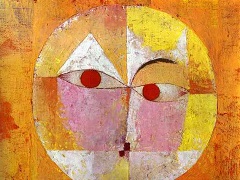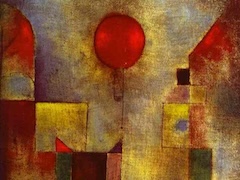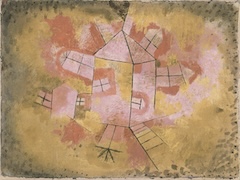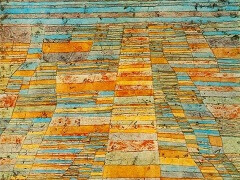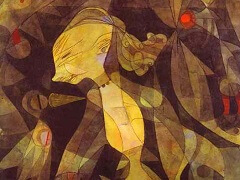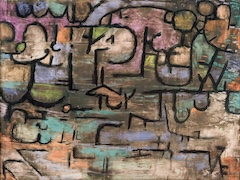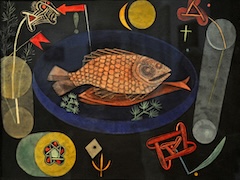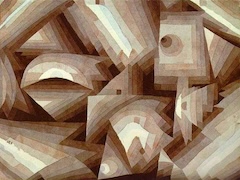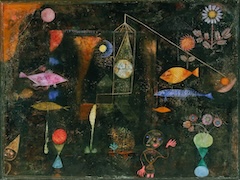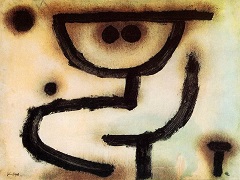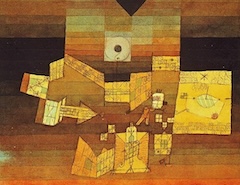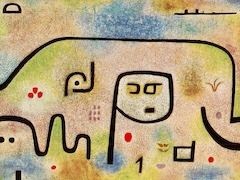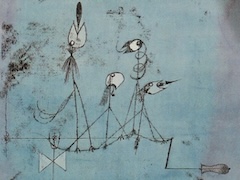Fish Magic, 1925 by Paul Klee

In Fish Magic, Paul Klee creates a magical realm where the aquatic, the celestial, and the earthly intermingle. A delicate black surface covers an underlayer of colors, which the artist revealed by scratching and scrawling designs in the black paint. At the center of the painting, a square of muslin is glued onto the canvas. A long diagonal line reaching to the top of the clock tower is poised as if to whisk off this subtle curtain.
Paul Klee's Fish Magic is set squarely within the tradition of German Romanticism, with its blend of fantasy and natural empiricism, of poetry and pragmatics. In this painting, made in the middle of the artist's period at the Bauhaus, the aquatic, celestial, and earthly realms intermingle. They do so in an inky black atmosphere of indeterminate scale and scope, where fish and flora float among human beings and clock towers. The delicate black surface that washes over the entire canvas covers an underlayer dense with multicolored pigments. Klee scraped and sanded the black paint to reveal mysterious specks and passages of glowing color underneath, a sophisticated version of the games children play with wax crayons. The artist also ingeniously conceived a device to imply that there are more mysteries waiting to be unveiled: Fish Magic is actually a collage, with a central square of muslin glued on top of the surface of the larger rectangular canvas. A long diagonal line reaching to the top of the clock tower from the side seems poised to whisk off this subtle curtain. For Klee, art was always theater, and, like all his paintings, this one offers a promise of more acts to follow.

